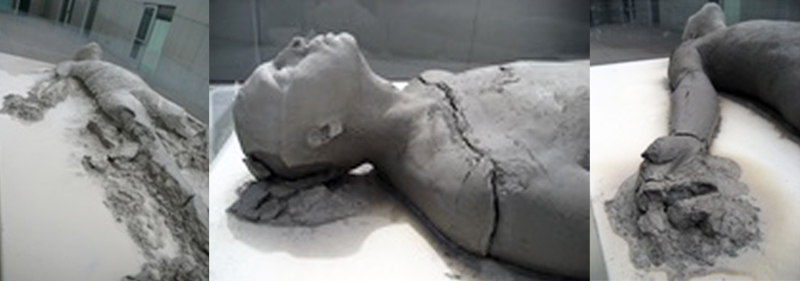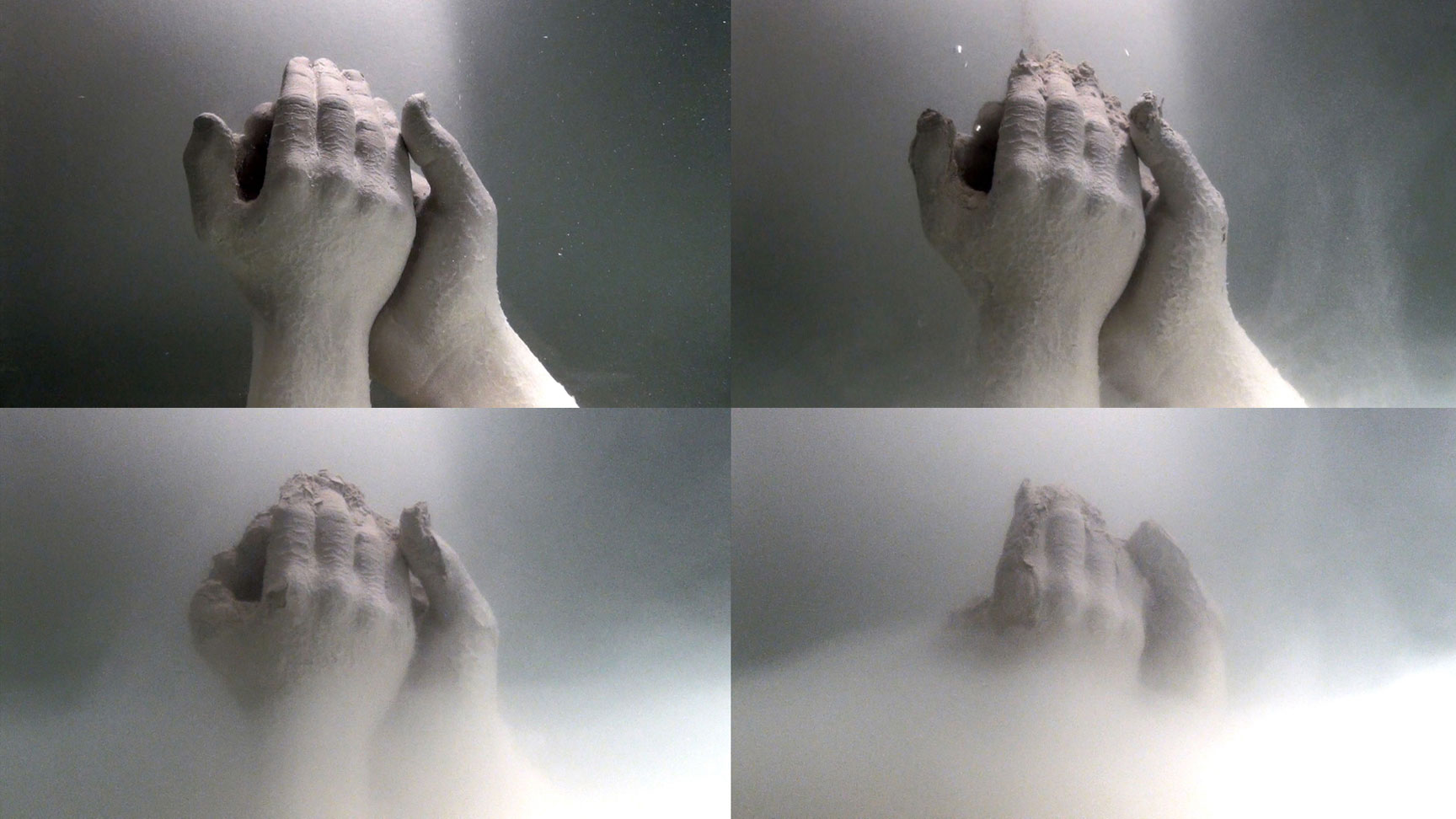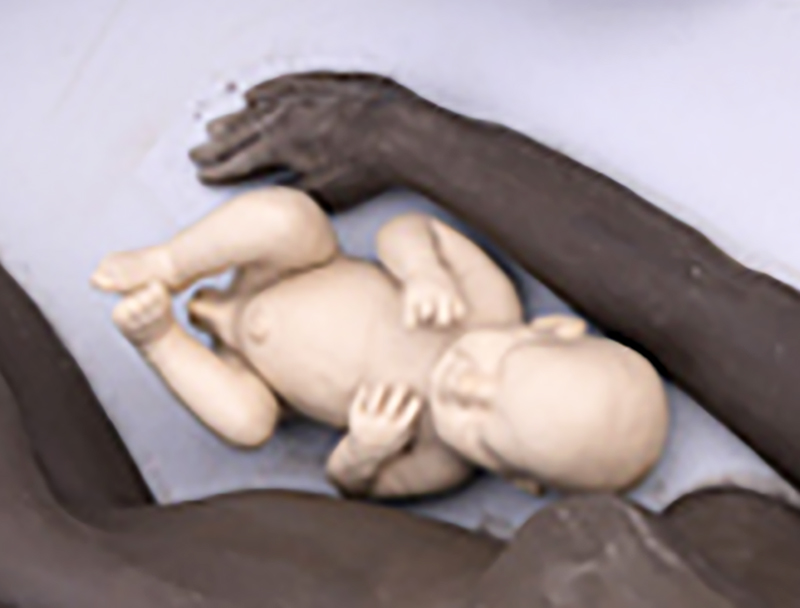Arun Sharma is a New-York born artist who has studied in the US and the UK and exhibited across the world. His website reports that he lives in Sydney and I encountered his work a few years ago at the Sydney Sculpture by the Sea.

Here’s the work that was on display. It’s unfired clay casts of a male and female form. and then a glazed infant between them. It’s brave to put unfired clay on display outdoors on the coast but that’s exactly the kind of thing Sharma has done in his work.

Here’s (De)composition: Man. He makes a clay cast of a human form and on this occasion exhibited it soaking in water. The sculpture is kinetic, changing, moving over time but more slowly than we’re used to with kinetic works.
After a month the tub of water was all cloudy and he drained the water away and then left the unfired form in the sun and even the snow.

You can see the effects.

Here's another work involving a couple set outside to decompose.

And a detail of some hands slowly melting away.
So what of this couple lying outside with their baby at Sculpture by the Sea?
The artist has said:
“My desire is to find beauty in the return of the physical human body to the earth at death…”
In a way, I get it.
There is something mesmerising and, yes, beautiful in the cracks and the slow disappearance of the form but I found I was distressed because the baby lying there was not decomposing

I had a terrible sense of loneliness and loss and feared for the future of this infant whose parents were crumbling around it.
Decomposition can be devastating.
Of course, artists love mother, father, child works and there are many medieval and Renaissance depictions of the holy family. I guess Mary and Joseph are crumbling away it’s just that the artist hasn’t attended to that but the infant at the centre of the painting will have a strangely different future.

As people of Easter, we can marvel at the beauty of Jesus’ triumph over decomposition and give thanks that he wants to share that triumph with us.
